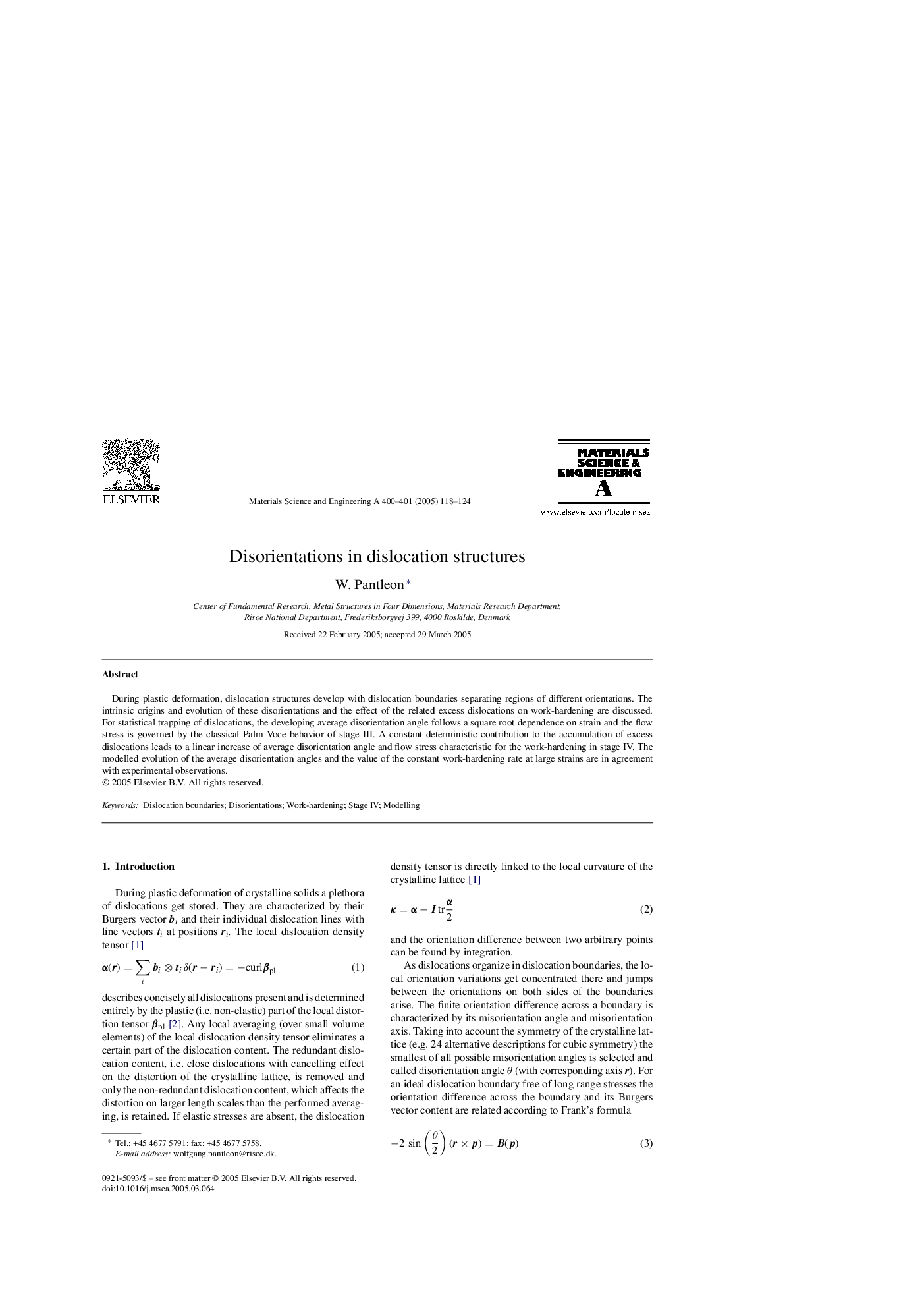| Article ID | Journal | Published Year | Pages | File Type |
|---|---|---|---|---|
| 9796090 | Materials Science and Engineering: A | 2005 | 7 Pages |
Abstract
During plastic deformation, dislocation structures develop with dislocation boundaries separating regions of different orientations. The intrinsic origins and evolution of these disorientations and the effect of the related excess dislocations on work-hardening are discussed. For statistical trapping of dislocations, the developing average disorientation angle follows a square root dependence on strain and the flow stress is governed by the classical Palm Voce behavior of stage III. A constant deterministic contribution to the accumulation of excess dislocations leads to a linear increase of average disorientation angle and flow stress characteristic for the work-hardening in stage IV. The modelled evolution of the average disorientation angles and the value of the constant work-hardening rate at large strains are in agreement with experimental observations.
Related Topics
Physical Sciences and Engineering
Materials Science
Materials Science (General)
Authors
W. Pantleon,
